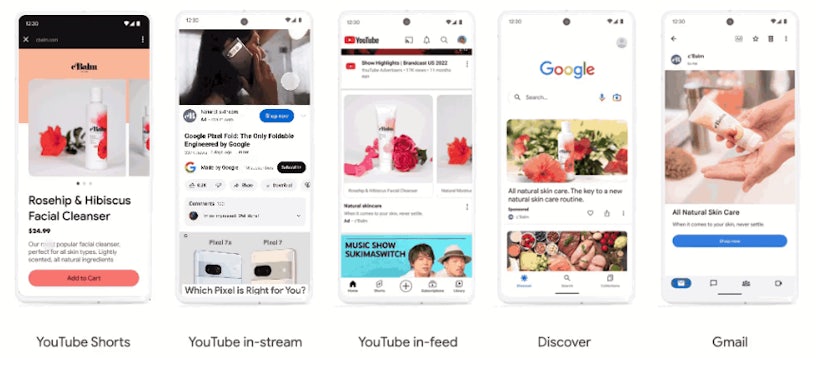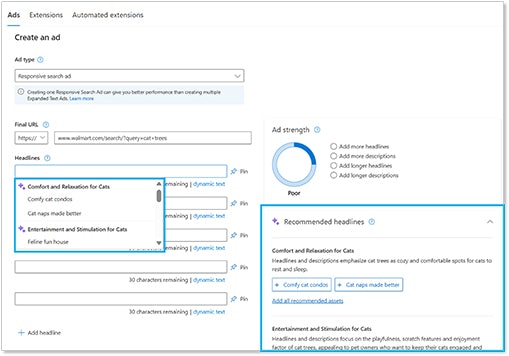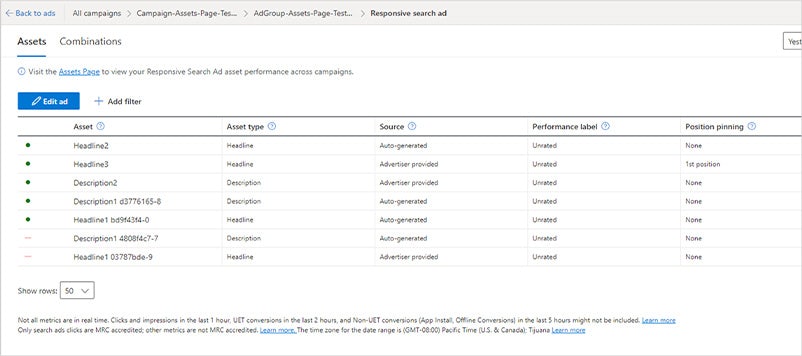Welcome to the latest blog from Impression on Paid Search industry updates. With the first half of 2023 gone, it’s time for marketers to review their digital strategy for H2 and learn about the latest PPC trends to stay ahead of the curve.
Keep reading to discover:
As usual, traffic light imagery is featured throughout to indicate the importance of each new update – red denoting a priority update, green representing a less important update and amber lying somewhere in the middle.
Google Merchant Centre announces upcoming changes to product data specifications

The quality of product data that advertisers feed into Google Merchant Centre is a key factor in the success of campaigns, as Google ensures products which adhere to all requirements stand out in the auction. Therefore, marketers should always remain up-to-date with the latest changes in Google Merchant Centre to ensure their inventory is adhering to all requirements.
Starting in July, the [availability] attribute in Google Merchant Centre will have to be completed across all products which appear in local inventory ads or in free listings. Previously, advertisers were required to complete only the [quantity] attribute for their products, while the [availability] field was optional.
To simplify the setup and management of inventory, Google has now removed the [quantity] attribute from requirements, replacing it with [availability], an attribute which is much easier for advertisers to fill in and keep track of. Google also announced that it will start sending warnings to advertisers who have not updated [availability] across all products in their local inventory feeds.
Another change related to product availability will be rolled out in Google Merchant Centre from the 1st of September. Advertisers should ensure all products in their inventory have the correct [availability] attribute and that that is representative of the actual state of the product on the landing page. Hence, products which are incorrectly showing as ‘out of stock’ but are ‘in stock’ on the website will become disapproved and will stop showing in shopping and free listings.
Indeed, advertisers were previously allowed to use the [availability] attribute to temporarily pause products from appearing in the auction. However, Google encourages advertisers to start using the newly introduced [pause] attribute for the situation of temporarily pausing products.
What does this mean for me?
As product data excellence is becoming increasingly important, Google urges advertisers to ensure their data quality is up to standard, as this is key to nurturing Google’s algorithm. The data provided by marketers in Google Merchant Centre together with other signals like business and marketing data allow Google to match the products with the most relevant user queries, guaranteeing advertisers that budgets are spent on the right audience. Therefore, marketers have a fundamental role to play in updating their product data and ensuring this is always up to Google’s standards and requirements.
Google Ads launches two new AI-driven campaign types

AI has been a buzzword in recent years, specifically in recent months with the launch of Chat GPT. Google jumped on this trend not only by launching its own AI chatbot called Bard, but also by creating new innovative opportunities for advertisers on Google Ads.
Google will be rolling out two new campaign types by the end of 2023: Demand Gen and Video View. These campaigns will use immersive image and video assets and will be particularly useful for targeting users at the middle of the funnel and guiding them to the bottom of the funnel to take action.
- Demand Gen campaigns will be displayed across YouTube In-Feed, YouTube Shorts, Gmail and Discover. These campaigns will use high-performing image and video creatives to captivate users’ attention at multiple touchpoints. Demand Gen allows audience customisation by expanding the campaign’s reach and targeting lookalike segments. Moreover, the campaign works with both maximise clicks or maximise conversions bidding strategies, allowing marketers to tailor the campaign to their business goals and KPIs.
- Video View campaigns have the purpose of increasing views and appearing across YouTube, both in-feed and in Shorts. Google’s early testing of the campaign resulted in advertisers who use Video View to reduce CPMs as well as get 40% more views compared to regular in-stream skippable Video campaigns.

What does this mean for me?
As the buyer’s journey becomes increasingly complex and users need more engaging content to capture their attention, leveraging AI will become detrimental for marketers who want to succeed and remain competitive in the market. Demand Gen and Video View give marketers a medium of measuring the incremental impact of the campaigns, allowing for more informed, data-driven decision-making.
Considering the two new campaign types are yet to be officially launched, advertisers jumping on the bandwagon early and signing up for the beta version will get more time to test the campaigns and get a better understanding of the capabilities of AI in marketing.
Microsoft leverages the power of AI for its responsive search ads

Google Ads is not the only advertising platform looking to leverage its capabilities even further using the power of artificial intelligence, because Microsoft Ads has also announced it will be utilising these developments in AI technology to add more features to its platform.
This announcement follows Google’s own advancements in streamlining the advertisers’ experience with AI, with several elements of campaign building now being automatically generated upon request, something displayed at this year’s Google Marketing Live event.
Similarly, Microsoft Ads will now present advertisers with automatically-generated headline and description recommendations based on the final URL provided during ad creation. This feature is available in 35 different languages as of this moment, with more likely to come.

Taking this a step further, a new ‘auto-generated assets’ feature has also been added which advertisers can opt into. Similar to dynamic search ads found on the Google Ads platform, ads created with this setting will dynamically generate both headlines and descriptions when ads are served, with new reporting features also added to measure their performance against advertiser-provided assets.

What does this mean for me?
These new features will be a welcome addition to advertisers across an array of different scenarios. Whether you are operating in large, complex account structures where auto-generated assets can help you create ads at scale, or in need of some creative inspiration for ad copy, these changes are likely to help.
However, bear in mind that AI is relatively new and continuing to evolve. Human intervention is necessary to ensure that AI-leveraged campaigns perform to their full potential.
Ultimately, this is yet another demonstration of how the landscape of advertising continues to be moulded by the recent advancements in AI technology and further reinforces how vital it is for advertisers to adopt these changes into their overall strategy.
YouTube introduces further measures to combat the use of ad blockers

Being described as a “small experiment” by Google-owned company, YouTube, users are now being increasingly discouraged from using ad blockers on the video streaming site, in what could actually become a substantial shift in the future of pay-per-click video advertising.
Users have recently been reporting the addition of a new prompt appearing on-site, stating that video playback would be restricted if the site detects constant use of an ad blocker tool, limiting users to only three videos.
Despite this, it seems that the process of clamping down on ad blocker usage will be gradual, as YouTube states that it will notify users several times telling them to stop using these tools or subscribe to the platform’s Premium membership, before restricting playback.
YouTube further reinforces that their motivation behind these changes is to compensate creators for their content, as ad placements are ‘critical’ for this, as well as to ensure that the usage of the site remains free.
What does this mean for me?
If the adjustments currently being tested are here to become a staple of YouTube’s, and in turn Google’s approach to video advertising, advertisers are likely to see huge benefits.
Users who want to continue browsing YouTube for content for free without the use of an ad blocker will now be forced to view ads shown during their session. With Google continuously advocating and pushing for the use of Performance Max campaigns within advertisers’ Google Ads strategies, and video advertising across YouTube being one of the elements these campaigns cover, we are likely to see further reach and traffic being generated.
Theoretically, this could also lead to a higher volume of conversions coming through these campaigns, or at the very least promote further data density for further learnings to be made and help these AI-supported strategies become even more effective.
Look out for our next blog in August for more paid search industry updates to inspire your PPC strategy. If you want to talk about your business aspirations, get in touch!



